I am a novice, and I'm playing around with SMD magnetic buzzers. For instance, the CUI CMT-322-65-SMT-TR.
In the datasheet they recommend something like this:

After some Googling I learnt the diode is a flyback diode, which prevents the transistor from being damaged when power is cut.
My question is: how do I know which diode to use?
In this case, the +VDC powering the buzzer would be 3V. Do I need a regular, Zener or Schottky diode? Regardless of the type, what kind of characteristics should I then be looking for in this specific configuration?
This is an SMD project, but since I'm just experimenting I can also play around with through-hole diodes if you have any suggestions.
